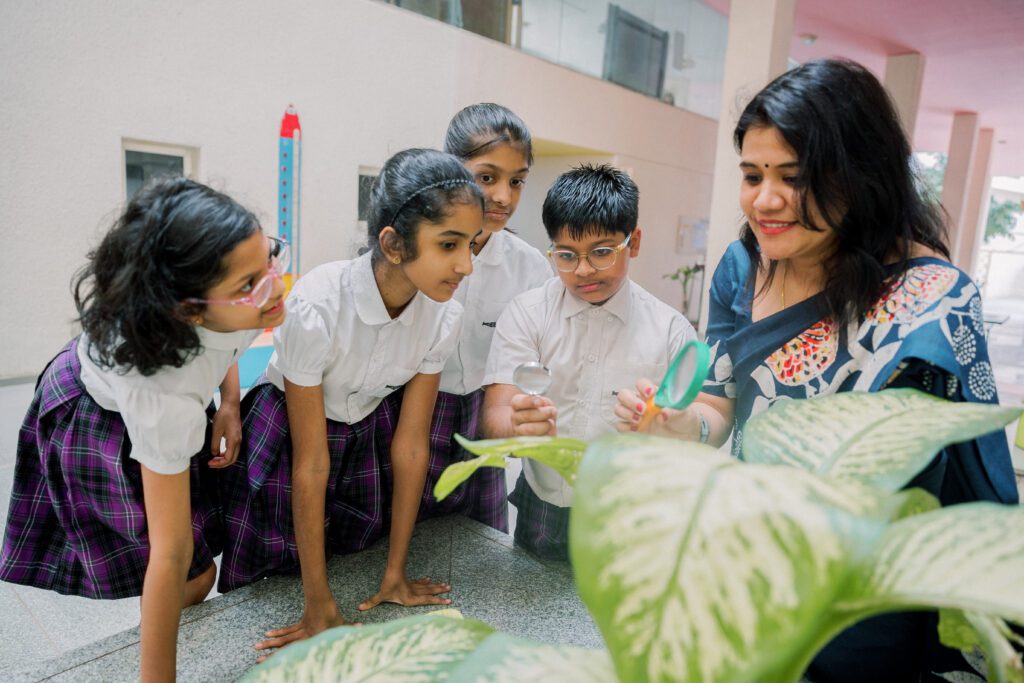Supporting Your Child’s Emotional Well-Being During School and Grade Transitions
Transitions in school – whether it’s moving to a new grade, starting at a new school, or adapting to a different academic environment- can be both exciting and challenging for children. These moments often bring new routines, expectations, and social dynamics, which can impact a child’s emotional well-being. At Ekya Nava, one of the most innovative international schools in Bangalore, we recognise that transitions are pivotal moments in a child’s educational journey. With the right support, these changes can become opportunities for growth, resilience, and self-discovery. Here’s how you can help your child navigate these transitions with confidence and emotional stability. 1. Acknowledge and Validate Their Feelings Transitions often evoke a mix of emotions – excitement, anxiety, fear, or even sadness. Acknowledging and validating your child’s feelings is the first step in helping them process the change. Encourage Open Conversations: Ask your child how they feel about the upcoming transition. Use open-ended questions like, “What are you most excited about in your new grade?” or “Is there anything that’s worrying you about starting at a new school?” Normalise Their Emotions: Reassure them that it’s normal to feel nervous or uncertain during transitions. Sharing your own experiences of adapting to change can help them feel understood and supported. By creating a safe space for your child to express their emotions, you help them feel heard and validated, which can ease their anxiety about the transition. 3. Maintain Familiar Routines While transitions bring change, maintaining familiar routines can provide a sense of stability and security for your child. Stick to Daily Habits: Keep consistent meal times, bedtime routines, and family rituals to create a sense of normalcy. Gradually Introduce New Routines: If the transition involves a new schedule, such as earlier wake-up times or longer school hours, introduce these changes gradually to help your child adjust. A predictable routine acts as an anchor, helping your child feel grounded amidst the changes. 4. Encourage Positive Social Connections Building relationships with peers and teachers is a crucial part of adapting to a new school or grade. Encourage your child to engage socially and form connections. Foster Friendships: If possible, arrange playdates or meet-ups with classmates before the school year begins. This can help your child feel more comfortable on the first day. Encourage Participation: Motivate your child to join clubs, sports, or extracurricular activities where they can meet like-minded peers. Model Social Skills: Teach your child how to introduce themselves, ask questions, and show kindness to others. At schools like Ekya Nava, which is known for its inclusive culture among international schools in Bangalore, students are encouraged to collaborate and build meaningful relationships through group projects and community activities. 5. Teach Coping Strategies for Stress Transitions can be stressful, but equipping your child with healthy coping mechanisms can help them manage their emotions effectively. Practice Mindfulness: Introduce simple mindfulness exercises, such as deep breathing or visualisation, to help your child stay calm and focused. Focus on Strengths: Remind your child of their past successes in adapting to change. For example, “Remember how well you adjusted to your new class last year? You’re great at making new friends!” Encourage Journaling: Writing about their thoughts and feelings can help your child process their emotions and gain clarity. 6. Collaborate with Educators Teachers and school staff play a vital role in supporting students during transitions. Partnering with educators can ensure your child receives the guidance they need. Communicate with Teachers: Share any concerns or insights about your child’s needs with their teachers. This helps educators provide tailored support in the classroom. Leverage School Resources: At Ekya Nava and many international schools in Bangalore, offer counselling services, well-being programs, and transition support to help students adapt to new environments. 7. Celebrate Progress and Small Wins Transitions take time, and every step forward is worth celebrating. Acknowledge your child’s efforts to adapt, no matter how small. Recognise Achievements: Celebrate milestones like making a new friend, completing their first assignment, or participating in a class activity. Encourage Reflection: Ask your child to reflect on what they’ve learned or enjoyed about the transition so far. This helps them focus on the positives and build confidence. A Holistic Approach to Transitions Transitions, while challenging, are also opportunities for growth and learning. By acknowledging your child’s emotions, preparing them for change, and fostering positive social connections, you can help them navigate these moments with resilience and confidence. At Ekya Nava, one of the most innovative international schools in Bangalore, we prioritise emotional well-being as a cornerstone of education. Through mindfulness practices, well-being sessions, and a nurturing community, we ensure that students feel supported during every transition. Together, let’s empower children to embrace change and thrive in every stage of life.


